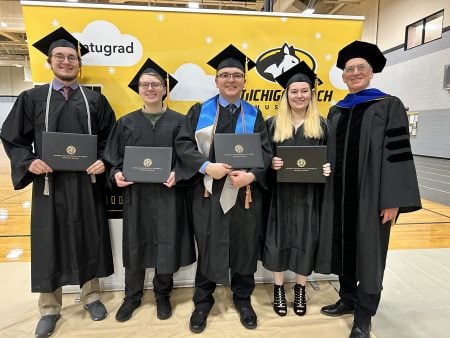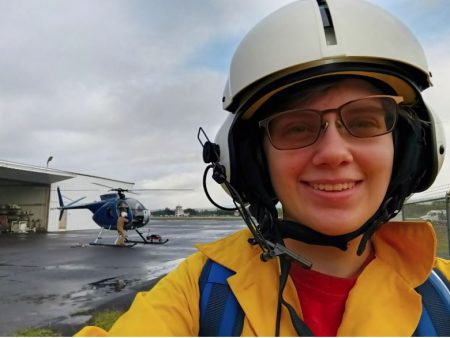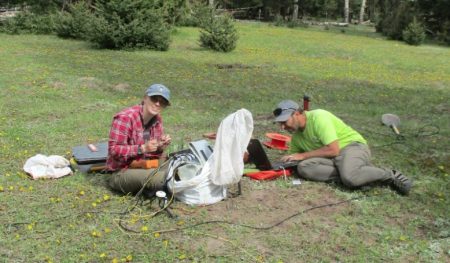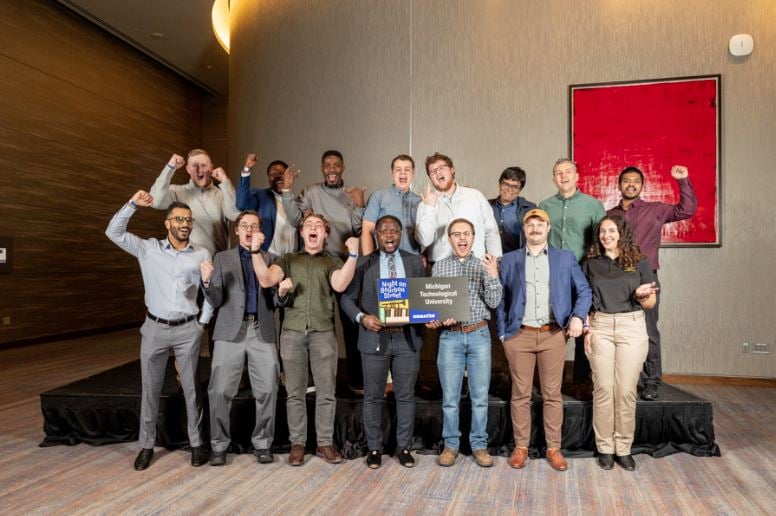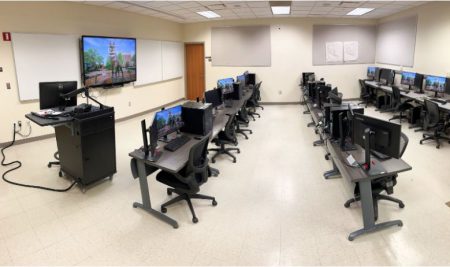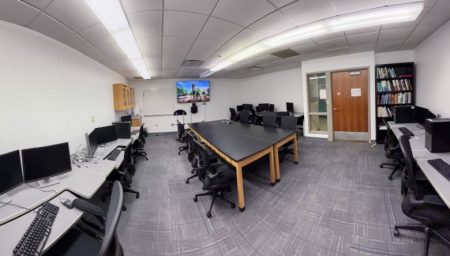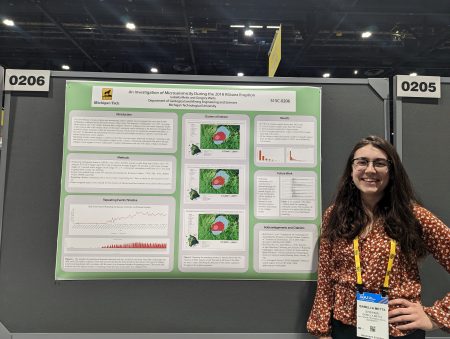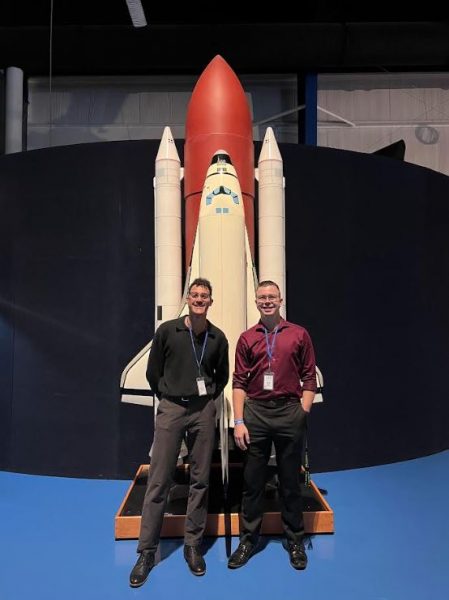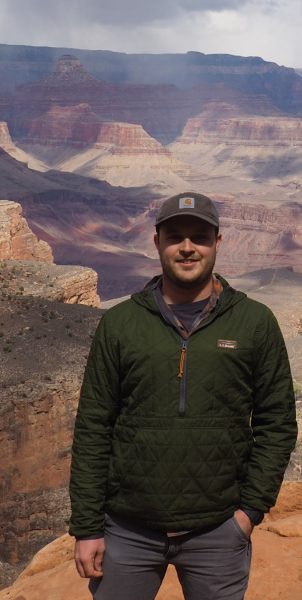The Department of Geological and Mining Engineering and Sciences is pleased to award five bachelor’s, and two master’s degrees this December.
Two graduate degrees awarded:
Breen, Dillon MS Geology
Advised by Dr. Luke Bowman
Metts, Isabella MS Geophysics
Advised by Dr. Greg Waite
Five undergraduate degrees awarded:
Hawes, Jack W. BS Geological Engineering
Johnson, Samuel A. BS Geology
McClelland, Elliz E. BS Geology
Myaard, John S. BS Geological Engineering
Verran, Maria E. BS Mining Engineering
Congratulations, and best of luck on all future endeavors!
